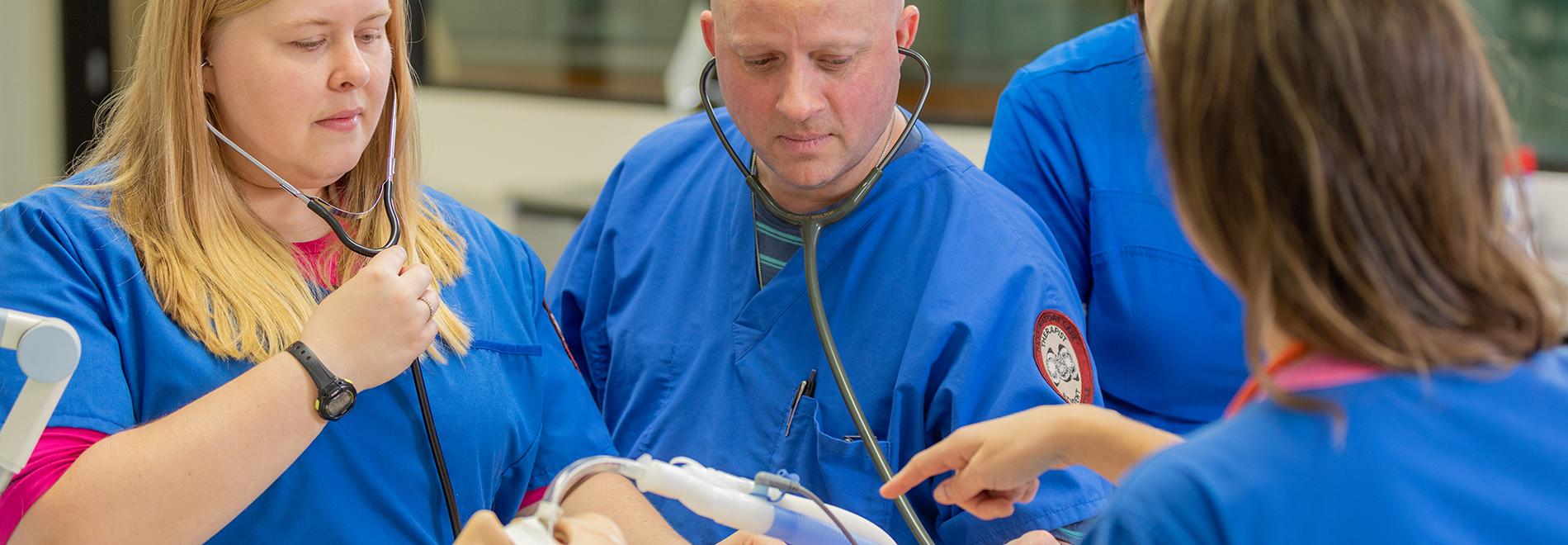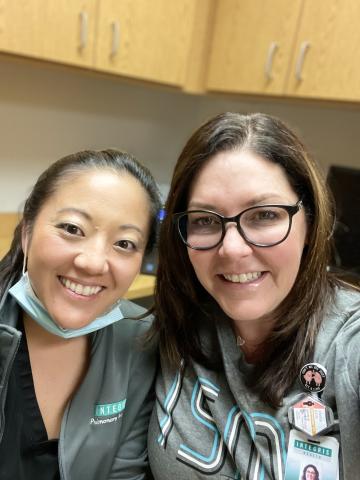Prior to COVID, I would say no one knew what a respiratory care therapist did ... So it brought to light how important we are to healthcare as a whole.
Jennifer Blevin gets to know some of her patients very well, which is simultaneously fulfilling and unfortunate.
There was one woman she knew very well who first came to the emergency room at INTEGRIS Southwest. She was a COPD patient, which is not uncommon in Oklahoma — about 7.9 percent of adults in the state are diagnosed with the disease, compared with 6.3 percent nationally.
Blevin took time to talk to the woman on subsequent visits. During a later visit, she asked Blevin a question that really stuck with her.
“She asked me, ‘Am I the only person like this?’ I told her no, you’re not,” Blevin said. “That’s when I decided to start a support group for people who are just like this lady. That way, they can see there’s more than just one of me; there are a lot who are just like me.”
Blevin graduated from the Respiratory Care program at Francis Tuttle in 2013, and that same year she started as a Respiratory Therapist at INTEGRIS. She has since become Supervisor of Respiratory Care and was recently named President-elect of the Oklahoma Respiratory Society.
“Everyone was so supportive of me and telling me that I can do this or I can do that,” she said. “It was a great program, and I learned so much, and the instructors were amazing. We now hire students from Francis Tuttle all of the time.”
Community breathes to life
Patients with COPD, pulmonary fibrosis, and other chronic respiratory illnesses often struggle to live the same life they had before. It can prevent them from enjoying time with friends or taking part in strenuous activities, and it can leave them feeling isolated.
Better Breathers was started at INTEGRIS to help solve this problem. It is open to anyone who struggles with chronic respiratory illnesses and gives them a sense of community.
“There’s a lot of isolation for chronic patients, so it’s great to get them out and let them see they are not alone and there are things you can do to improve your life,” Blevin said. “We do breathing exercises, talk about the medications they have to take, we have people come and speak about nutrition, we do chair exercises, and stuff like that.”
Education is key for chronic respiratory conditions. Nutrition, exercise, and careful use of medication all play a role in improving the daily lives of patients.
Having a community to support them through all of this also helps. Little did Blevin know, she started that community at just the right time, before COVID-19 turned everyone’s world upside down.
“What we’re seeing a lot of now is post-COVID fibrosis,” Blevin said. “There are long-term effects that we are seeing in an increased amount of patients. They bounce back in the hospital because of reoccurring infections.”
COVID after-effects leave skills gap
The pandemic did not change the nature of work for respiratory therapists, but it definitely changed the way people thought about respiratory care. Its importance has grown.
“Prior to COVID, I would say no one knew what a respiratory therapist did,” Blevin said. “They didn’t understand the expertise we had to have to run ventilators or change the patient’s position to assist with their breathing. So it brought to light how important we are to healthcare as a whole.”
Now the world needs more of them. A 2021 study by the American Association for Respiratory Care (AARC) predicts that more than 92,000 respiratory therapists will retire by 2030, and 93 percent of respiratory therapists say burnout is a major issue.
“What we found out in the heat of the pandemic is we didn’t have enough therapists,” Blevin said.
The life of a respiratory therapist can be stressful, but it is equally rewarding, Blevin said.
“We actually just had a patient come by and see us,” she said. “He was the sickest of the sick. We were sure he wouldn’t survive, but he did. Those patients and seeing what we’ve done to help improve their lives, I think that’s what motivates me and keeps me coming back. What I do means possibly changing someone else’s life. The education I share with patients can help improve their lifestyle or even just make a small difference in their day. That’s what it is all about.”

